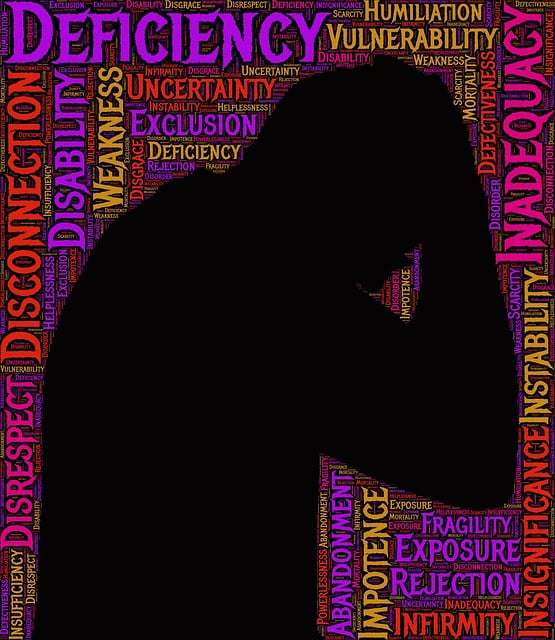Risk assessment is critical in Lone Tree Autism Spectrum Disorder Therapy, addressing immediate dangers and long-term outcomes through cultural sensitivity, behavioral observation, and systemic analysis. Combining mental health policy, emotional intelligence, and crisis intervention guides accurate risk assessments. Therapists use multi-faceted strategies like structured environments, coping mechanisms, and inner strength development to manage unpredictable behaviors and sensory sensitivities. Regular review of risk management plans is essential for evidence-based practices, self-care routines, and burnout prevention among professionals. These proactive measures enhance care quality and provider well-being.
Mental health professionals face unique challenges, particularly when treating individuals on the autism spectrum. This article guides you through essential risk management planning for such specialized practices, focusing on Lone Tree Autism Spectrum Disorder Therapy. We explore risk assessment techniques tailored to this domain, identifying common hazards and offering practical strategies for mitigation. By implementing a comprehensive plan, therapists can ensure safe, effective care while navigating complex patient needs.
- Understanding Risk Assessment in Mental Health Practice
- Identifying Potential Risks in Lone Tree Autism Spectrum Disorder Therapy
- Developing a Comprehensive Risk Management Plan
- Implementing and Monitoring the Effectiveness of Risk Mitigation Strategies
Understanding Risk Assessment in Mental Health Practice

Risk assessment is a cornerstone of mental health practice, crucial for ensuring patient safety and guiding therapeutic interventions, especially when working with individuals on the autism spectrum like those seeking Lone Tree Autism Spectrum Disorder Therapy. This process involves systematically evaluating a client’s risks and protective factors to inform treatment planning. Mental health professionals must be adept at conducting comprehensive risk assessments that consider not only immediate dangers but also potential long-term outcomes.
Incorporating elements from Mental Health Policy Analysis and Advocacy, emotional intelligence, and Crisis Intervention Guidance is essential for thorough risk assessment. It necessitates understanding cultural nuances, recognizing subtle behavioral cues, and being attuned to systemic issues that can impact a client’s mental health. A nuanced approach ensures that the risk assessment is not only accurate but also promotes culturally sensitive and evidence-based practices tailored to each individual’s unique needs.
Identifying Potential Risks in Lone Tree Autism Spectrum Disorder Therapy

In the context of Lone Tree Autism Spectrum Disorder Therapy (ASD), risk management planning is paramount to ensuring safe and effective treatment. Mental health professionals working with individuals on the ASD spectrum often face unique challenges, including unpredictable behaviors, communication difficulties, and sensory sensitivities. These factors can contribute to potential risks, such as escalated anxiety or distress for the client, unexpected physical confrontations, or even self-harming behaviors. Therefore, thorough risk assessment is essential.
Effective risk management strategies in Lone Tree ASD therapy involve a multi-faceted approach. Professionals should integrate Crisis Intervention Guidance, fostering Inner Strength Development, and cultivating Emotional Intelligence to mitigate risks. This includes establishing clear boundaries, implementing structured environments, providing consistent support, and teaching coping mechanisms tailored to each individual’s needs. By prioritizing these strategies, therapists can create a safe space for clients to thrive while navigating the complexities of their ASD symptoms.
Developing a Comprehensive Risk Management Plan

Developing a Comprehensive Risk Management Plan for mental health professionals is an essential step in ensuring the well-being and resilience of both practitioners and their clients. This plan should be tailored to address unique challenges, such as those faced by therapists specializing in conditions like Lone Tree Autism Spectrum Disorder Therapy. A robust strategy encompasses identifying potential risks, implementing mitigation strategies, and establishing clear protocols for crisis management.
By integrating Mood Management techniques, Mental Wellness Coaching Programs Development, and evidence-based Stress Reduction Methods, professionals can create a supportive environment that fosters both personal and professional growth. Effective risk management planning involves regular review and adaptation to evolving circumstances, ensuring that mental health practitioners remain equipped to navigate the complexities of their field while prioritizing their own mental wellness.
Implementing and Monitoring the Effectiveness of Risk Mitigation Strategies

Implementing risk mitigation strategies is a crucial step in safeguarding both mental health professionals and their clients, especially when addressing conditions like Lone Tree Autism Spectrum Disorder Therapy. These strategies should be tailored to address specific risks associated with the profession and individual practice settings. For instance, creating a comprehensive self-care routine development program can enhance resilience and mitigate burnout, which is prevalent among mental health providers.
Regular monitoring of these interventions is essential to ensure their effectiveness. By incorporating stress management techniques and healthcare provider cultural competency training, practices can foster an environment that supports both professionals’ well-being and the delivery of high-quality care. Continuous evaluation allows for adjustments and improvements, ultimately contributing to a healthier workplace and better patient outcomes.
Mental health professionals, especially those specializing in Lone Tree Autism Spectrum Disorder Therapy, must prioritize risk management planning to ensure safe and effective care. By understanding comprehensive risk assessment, identifying potential hazards, developing tailored strategies, and continually monitoring their impact, therapists can foster a secure environment for both clients and themselves. This proactive approach not only mitigates risks but also enhances the overall quality of therapy, ensuring that every session is a positive step towards recovery and well-being.











